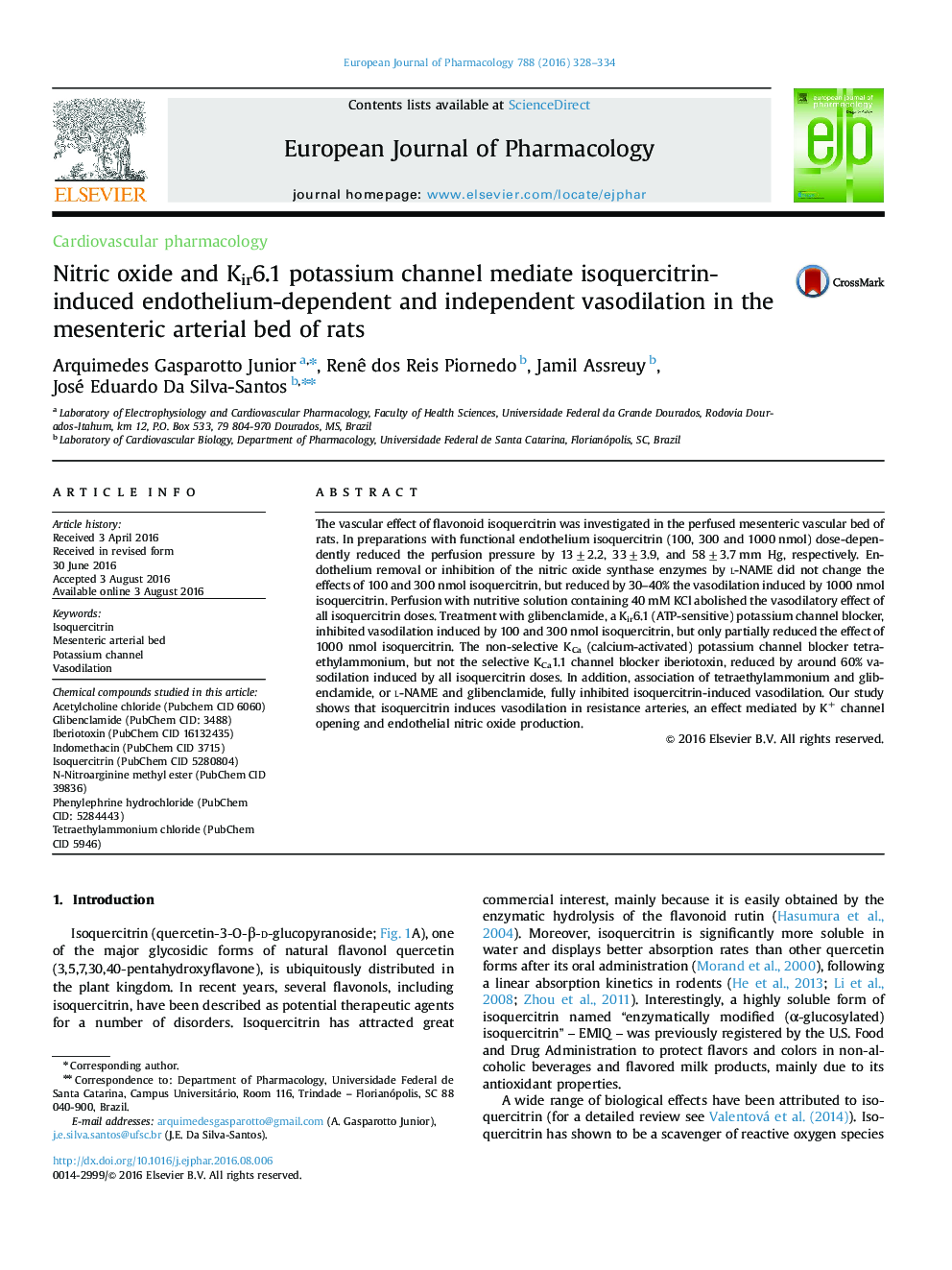| Article ID | Journal | Published Year | Pages | File Type |
|---|---|---|---|---|
| 5826675 | European Journal of Pharmacology | 2016 | 7 Pages |
Abstract
The vascular effect of flavonoid isoquercitrin was investigated in the perfused mesenteric vascular bed of rats. In preparations with functional endothelium isoquercitrin (100, 300 and 1000 nmol) dose-dependently reduced the perfusion pressure by 13±2.2, 33±3.9, and 58±3.7 mm Hg, respectively. Endothelium removal or inhibition of the nitric oxide synthase enzymes by l-NAME did not change the effects of 100 and 300 nmol isoquercitrin, but reduced by 30-40% the vasodilation induced by 1000 nmol isoquercitrin. Perfusion with nutritive solution containing 40 mM KCl abolished the vasodilatory effect of all isoquercitrin doses. Treatment with glibenclamide, a Kir6.1 (ATP-sensitive) potassium channel blocker, inhibited vasodilation induced by 100 and 300 nmol isoquercitrin, but only partially reduced the effect of 1000 nmol isoquercitrin. The non-selective KCa (calcium-activated) potassium channel blocker tetraethylammonium, but not the selective KCa1.1 channel blocker iberiotoxin, reduced by around 60% vasodilation induced by all isoquercitrin doses. In addition, association of tetraethylammonium and glibenclamide, or l-NAME and glibenclamide, fully inhibited isoquercitrin-induced vasodilation. Our study shows that isoquercitrin induces vasodilation in resistance arteries, an effect mediated by K+ channel opening and endothelial nitric oxide production.
Keywords
Related Topics
Life Sciences
Neuroscience
Cellular and Molecular Neuroscience
Authors
Arquimedes Gasparotto Junior, Renê dos Reis Piornedo, Jamil Assreuy, José Eduardo Da Silva-Santos,
